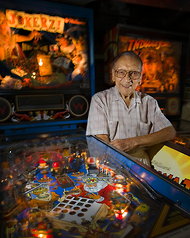Over at Kill Screen, a discussion I had with Jamin Brophy-Warren about failure in video games: I Like Dying a lot.
JBW: Do you think the way that game players deal with failure has relevance to the way that people deal with failure in life?
JJ: It’s very obvious that your personality kind of transfers to a certain extent. If you’re having problems dealing with major challenges in games, you probably also have problems in real life and vice versa. The thing with games is they allow for a kind of plausible deniability.
This is something I first read in Steven Pinker, who talks about how this happens with language typically. So if you say something like, “Nice laptop you’ve got there, it would be a shame if something happened to it,” that has a plausible deniability. Obviously there is a threat, but there’s a small way out that you could deny it’s the threat that it really was.
We have this freedom in games to take it seriously, even though it may not matter financially or whatever to you. But there’s also a freedom to not take it seriously. There’s a freedom in games to deny that the distress you were showing was all that important. In the 2010 World Cup, when the U.S. lost to Ghana, The New York Posthad a front page saying, ‘This sport is stupid anyway.’


![faculty_panel6-450x600[1]](http://www.jesperjuul.net/ludologist/wp-content/uploads/2012/02/faculty_panel6-450x6001.jpg)